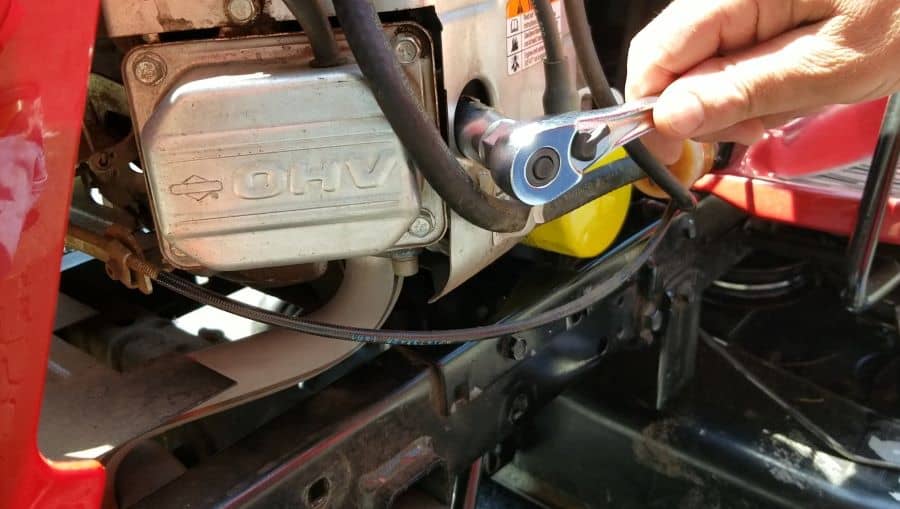Your engine’s backfiring is a disconcerting occurrence that can raise concerns about the health of your vehicle. Backfiring is characterized by a sharp, explosive sound emitting from the exhaust system, often accompanied by puffs of smoke or flames. This unexpected combustion can be alarming, but understanding the root causes and following a systematic approach will empower you to diagnose and resolve the issue effectively.

Image: www.youtube.com
Backfiring typically stems from unburned fuel finding its way into the exhaust system and igniting there instead of within the combustion chamber. This can occur for various reasons, ranging from minor adjustments to significant underlying problems. This comprehensive guide will walk you through the potential causes of engine backfire and provide step-by-step instructions for troubleshooting and resolution.
Unveiling the Causes of Engine Backfire
1. Incorrect Ignition Timing:
Accurate ignition timing ensures that the spark plugs fire at the optimal moment in the combustion cycle. Improper timing can lead to fuel being ignited too early or too late, causing the combustion process to extend into the exhaust system, resulting in backfiring.
2. Faulty Spark Plugs or Wires:
Worn-out or damaged spark plugs and wires can hinder the delivery of a strong spark to the combustion chamber. This can result in incomplete combustion, leaving unburned fuel to enter the exhaust system and potentially backfire. Inspecting and replacing faulty spark plugs and wires is crucial for proper ignition and combustion.
3. Vacuum Leaks:
Vacuum leaks can disrupt the optimal air-fuel mixture by introducing additional air into the system, leading to a lean fuel mixture. This imbalance can cause incomplete combustion and increase the likelihood of backfiring. Inspecting and sealing any vacuum leaks is essential for maintaining the proper air-fuel ratio and preventing backfires.
4. Malfunctioning Fuel Injectors:
In fuel-injected engines, faulty fuel injectors can lead to irregular fuel delivery, resulting in incorrect air-fuel ratios and incomplete combustion. This can cause unburned fuel to enter the exhaust system and potentially backfire. Diagnosing and replacing malfunctioning fuel injectors is crucial for ensuring precise fuel delivery and preventing backfiring issues.
5. Exhaust Valve Problems:
Exhaust valves play a critical role in allowing exhaust gases to exit the engine. Leaky or damaged exhaust valves can disrupt this process, causing exhaust gases to enter the intake manifold, creating a rich fuel mixture and increasing the risk of backfiring. Inspecting and replacing worn-out exhaust valves are essential for maintaining proper engine operation and preventing backfires.
6. Clogged Catalytic Converter:
The catalytic converter in your exhaust system is responsible for reducing harmful emissions. A clogged catalytic converter can restrict the flow of exhaust gases, leading to increased pressure in the exhaust system. This increased pressure can force unburned fuel into the exhaust system, causing backfiring. Inspecting and cleaning or replacing a clogged catalytic converter is critical for maintaining proper exhaust flow and preventing backfires.
Resolving Engine Backfire: A Step-by-Step Guide
1. Assess Ignition System:
Begin by inspecting the spark plugs. Replace any worn-out or damaged plugs. Next, check the spark plug wires for cracks or breaks. Replace faulty wires to ensure proper electrical conductivity and a robust spark. Finally, verify the ignition timing. Improper timing can be adjusted by a qualified mechanic.
2. Examine Vacuum System:
Inspect the vacuum lines and fittings for any cracks, breaks, or loose connections. Tighten any loose fittings and replace any damaged or cracked lines. Ensure all vacuum lines are properly connected to the intended components to maintain the correct air-fuel mixture.
3. Test Fuel Injectors:
Disconnect the fuel injector harness and use a multimeter to test each injector for resistance and voltage. Replace any faulty injectors to ensure proper fuel delivery and prevent backfiring.
4. Inspect Exhaust Valves:
Remove the valve cover and visually inspect the exhaust valves for any signs of wear or damage. Check for proper seating and valve clearances. Resurface or replace worn-out or damaged exhaust valves to restore proper engine operation and prevent backfires.
5. Clean Catalytic Converter:
Remove the clogged catalytic converter from the exhaust system and use a commercial catalytic converter cleaner to dissolve accumulated deposits. Alternatively, you can replace the clogged catalytic converter with a new one to restore proper exhaust flow and reduce the risk of backfiring.

Image: neohandyman.com
How To Fix Engine Backfire
Conclusion
Engine backfire can be a frustrating issue, but by understanding the underlying causes and following a systematic troubleshooting approach, you can diagnose andresolve the problem effectively. Whether it’s improper ignition timing, faulty spark plugs, vacuum leaks, malfunctioning fuel injectors, exhaust valve issues, or a cloggedcatalytic converter, the solutions outlined in this guide will empower you to restore your engine’s smooth operation and eliminate backfiring concerns. If the issue persists after following the provided steps, do not hesitate to seek professional assistance from a qualified mechanic for further diagnosis and repair.







